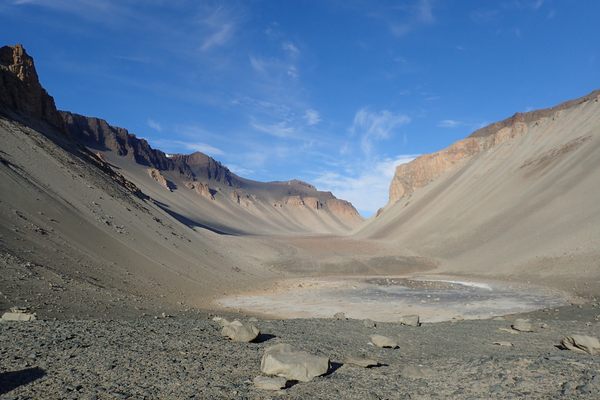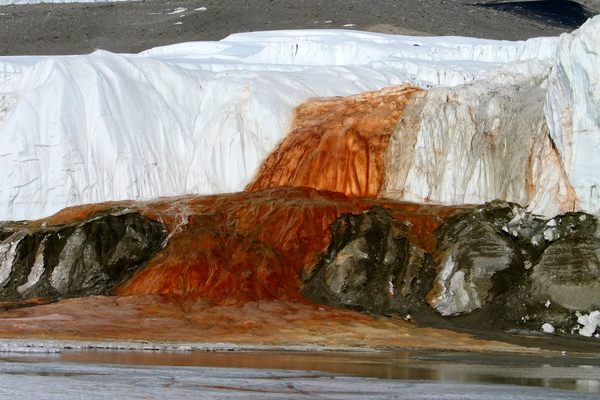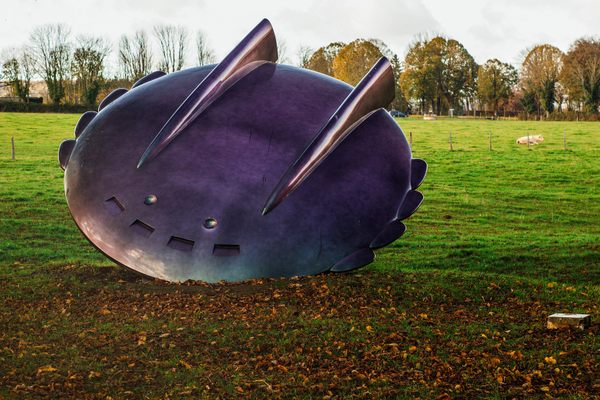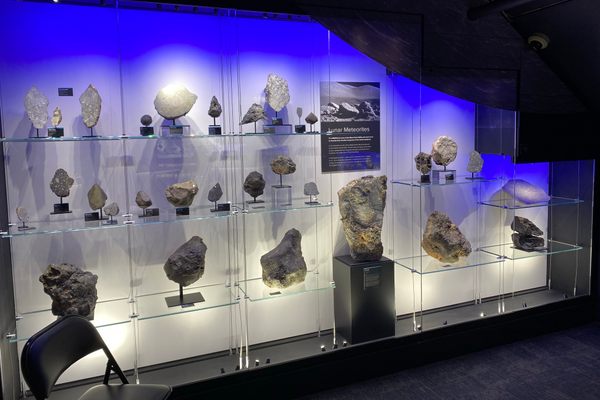AO Edited
Allan Hills
An ice field known for harboring an infamous Martian meteorite turned out to contain the oldest air on Earth.
On December 27, 1984, a meteorite was found in the ice field near Allan Hills, a rocky outcrop that protrudes from the blue ice in Victoria Land, East Antarctica. Cosmo-chemical analyses back in the lab revealed a Martian origin. Years later, this meteorite, known as ALH84001, gained popularity as an article published in the journal Science reported structures in the rock and interpreted them as fossilized lifeforms, which, if true, would be the first definitive sign of extraterrestrial life.
A media storm ensued, followed by a televised statement by then-President Bill Clinton. The scientific community never fully accepted the claim, however. One concern was the contamination by terrestrial materials. Another is the speculative nature of morphology-based inferences and the lack of more conclusive evidence. The proponents of the extraterrestrial-life hypothesis did not back down. The original paper from 1996 has been cited more than 2,000 times, and to this day, research into ALH84001 is still ongoing. In light of the media attention it receives, ALH84001 is arguably the most well-known meteorite of any kind.
Decades later, another discovery from Allan Hills made headlines as a team of scientists found air trapped in the ice buried near Allan Hills that could be up to 2.7 million years old. Yet, according to the paper published on journal Nature in 2019, it appears that the chemical composition of certain pockets of air had been modified by microbial activities, resulting in elevated concentrations of carbon dioxide and a 50 percent depletion of molecular oxygen. Thus, the oldest “pristine” air without any biological perturbation is more likely to be 2 million years old. While the new record was pushed back by some 700,000 years, it still more than doubled the previous “oldest air” record of approximately 800,000 years.
The composition of the 2-million-year-old air does not differ much from that of the air we breathe today, other than the air inside that ice having 30 percent less carbon dioxide than modern air. (This excess of carbon is due to man-made emissions from fossil fuel burning.) If one were able to breathe the trapped air, it would not be possible to tell the difference, at least in theory. According to the driller who drilled the ice in the field, the “drinks tasted so good with this old ice” although no scientific evidence has been provided in support of this claim.
The presence of meteorites and very old ice near Allan Hills is linked to the same glaciological principle. Near Allan Hills, ice flows along with a rising bedrock topography towards the surface, where ferocious katabatic winds (winds produced by the flow of cold dense air down a slope under the force of gravity) blow the ice away through ablation, leaving the meteorites trapped in the ice behind. This dynamic feature exhumes crystalline glacial ice that is otherwise buried deep in the ice sheets. However, where the 2-million-year-old ice was originally deposited remains unclear. All that is known is that the ice must be brought to Allan Hills from somewhere else. No one can predict the age limit of the oldest ice near Allan Hills or knows if even older ice would emerge in other places with similar glaciological features.
Know Before You Go
As every site in Antarctica, Allan Hills is difficult to access. The "easiest" approach by far is to submit a scientific proposal and (hopefully) get funded. If you do, you will likely head to McMurdo Station first to receive proper training before being transported to this remote field site by a fixed-wing aircraft. Alternatively, it may be possible to traverse over the ice to reach this location in a motorized convoy, but cautions must always be taken in Antarctica.





















Follow us on Twitter to get the latest on the world's hidden wonders.
Like us on Facebook to get the latest on the world's hidden wonders.
Follow us on Twitter Like us on Facebook